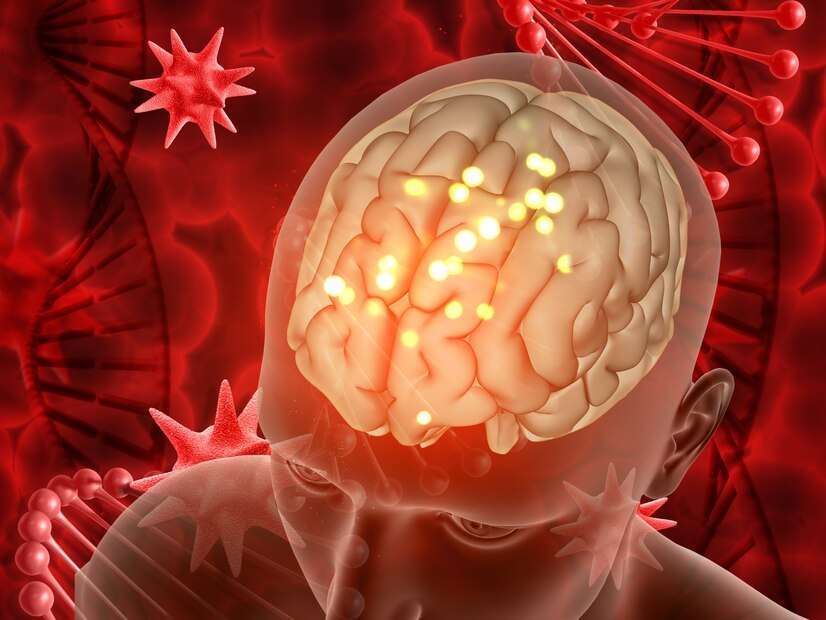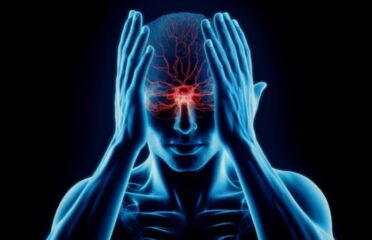Rasmussen's Encephalitis
Overview

Rasmussen's Encephalitis is a neurological disorder that is uncommon and progressive in nature, usually found in children. This disorder leads to chronic inflammation of the brain, which results in frequent and severe seizures, neurological deficits, cognitive decline, and loss of motor skills.
Symptoms
-Generalized Tonic-Clonic Seizure:
Involves strong muscle movements on both sides of the body.
Characterized by convulsions during the seizure.
-Focal Aware Seizure:
Occurs while awake and aware of surroundings.
Manifests with symptoms like twitching in one hand or arm.
-Focal Impaired Awareness Seizure:
Originates in one side of the brain.
Results in a change in the level of awareness during some or all of the seizures.
Causes & Risks
-Autoimmune Disease: Rasmussen's encephalitis involves the immune system attacking healthy brain tissue, potentially due to autoimmune factors with an unknown trigger.
-Viral Influence: The condition might result from an unidentified virus infiltrating the brain. However, pinpointing a specific virus remains elusive despite meticulous brain studies.
-Immune System Anomalies: In Rasmussen's encephalitis, the immune system displays aberrations, leading to an attack on healthy brain tissue, particularly affecting one side.
-Unidentified Viral Associations: Despite extensive research, a specific virus responsible for Rasmussen's encephalitis remains unidentified, contributing to the ongoing challenge of understanding its origins.
Test & Diagnosis
Magnetic Resonance Imaging (MRI) reveals atrophy (brain tissue loss) on one side of the child's brain, a distinctive pattern indicating Rasmussen's encephalitis (RE).
A specific, progressive atrophy pattern observed over months or years is a crucial diagnostic sign.
Electroencephalography (EEG) plays a vital role in diagnosis, recording the child's brain's electrical activity.
EEG helps identify abnormal electrical patterns associated with Rasmussen's encephalitis.
Combining MRI findings and EEG results provides a comprehensive diagnostic approach.
The specific atrophy pattern observed through MRI and abnormal electrical patterns detected by EEG collectively strengthen the diagnosis of Rasmussen's encephalitis.
Treatment
-Antiseizure Medications: While not curative, antiseizure medications can potentially reduce the frequency and severity of seizures in RE.
-Immunotherapy: Early implementation of immunotherapy may aid in seizure management and prevent additional immune-related brain damage.
-Brain Surgery (Hemispherectomy): Hemispherectomy, involving the surgical removal or disconnection of half of the child's brain, is the most effective method for treating seizures in RE.
-Comprehensive Approach: Combining antiseizure medications, immunotherapy, and surgical interventions can offer a comprehensive strategy for managing seizures and mitigating the impact of Rasmussen's encephalitis.
-Ongoing Research: Continual research aims to explore innovative treatments, enhance existing approaches, and further understand the complexities of Rasmussen's encephalitis for improved patient outcomes.
Living With
Living with Rasmussen's encephalitis presents formidable challenges. This rare, chronic inflammatory neurological disease typically targets one hemisphere of the brain, resulting in seizures, cognitive deficits, and neurological decline. Effective management necessitates a multifaceted approach, combining antiepileptic medications, immunosuppressive therapies, and, in severe cases, surgical interventions such as hemispherectomy. This procedure involves the removal of part or the entirety of one brain hemisphere to control seizures and mitigates further damage. Beyond medical interventions, a robust support system comprising family, friends, and potential support groups becomes integral in navigating the complexities of Rasmussen's encephalitis, offering vital emotional and practical assistance for those grappling with this challenging condition.
Complications
-Seizures: These are often one of the earliest and most common symptoms. They can become frequent and resistant to medications over time.
-Cognitive Decline: Progressive cognitive impairment can occur due to ongoing inflammation and damage to brain tissue. This can affect learning, memory, and overall cognitive abilities.
-Motor Deficits: Weakness, loss of coordination, and problems with movement can arise as the inflammation affects different areas of the brain responsible for motor functions.
-Speech and Language Impairment: Damage to areas of the brain involved in language can lead to difficulties in speaking and understanding language.





